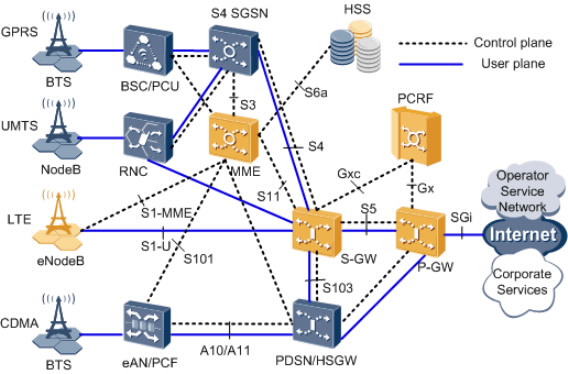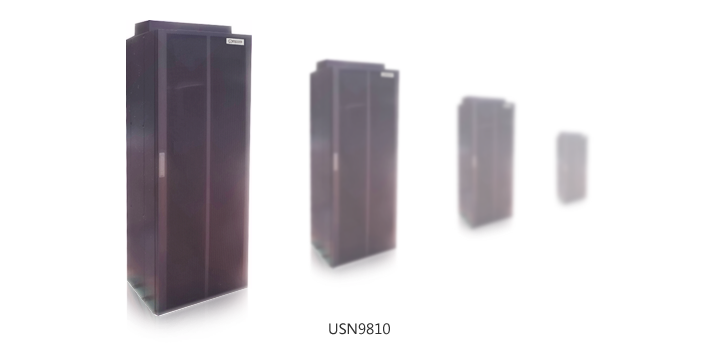High Integration
The USN9810 supports a maximum of 20,000 E-UTRAN subscribers attached at the same time. In the case of full configuration, only one cabinet, one Advanced Telecommunications Computing Architecture (ATCA) subrack, and one PGP-X8 subrack are required.
The USN9810 uses a high-speed forwarding processor to forward the data on the user plane, which improves the processing efficiency and integration of the system.
Advanced ATCA Platform
ATCA is a hardware standard. It is the name of the architecture standard for the hardware platform rather than the name of a specific product.
The USN9810 uses the Open Standards Telecom Architecture (OSTA 2.0) platform of Huawei, which is a server system featuring high density and high performance. The USN9810 can provide reliable data processing services for carrier-grade telecommunications applications.
- High rate
- High reliability
- High scalability
- Efficient management
Easy Operation and Maintenance
When the STM-1 or STM-4 optical interface is used for the USN9810 to interconnect with another device, you need to configure the clock synchronization system. The clock synchronization system of the USN9810 uses the advanced digital phase-locked loop (DPLL) and reliable software phase-locking technique, and has the following features:
- Clocks of multiple stratums such as stratum 2 (class A and class B) and stratum 3 clocks are available.
- Stratum 2 and stratum 3 clocks can be flexibly selected for configuration through a terminal.
- The input primary source signals 2.048 MHz and 2.048 Mbit/s are available.
- Powerful software functions are available. Operators can easily control the reference source and phase-lock mode of the clock through the LMT. In addition, the LMT provides complete display, alarm, and OM functions.
High Reliability
The USN9810 is highly reliable because of the following features:
- Backup of important data
- Operation security management
- Hardware redundancy design
- Fault prevention
- System overload control
- Board lock and unlock, process lock and unlock
Performance Specifications
| Parameter
|
Value
|
| Number of subscribers supported by the system
|
20,000
|
| Number of bearers supported by the system
|
40,000
|
| Number of bearers activated by a UE at the same time
|
11
|
| Number of eNodeBs supported by the system
|
50
|
| Number of S-GWs and P-GWs supported by the system at the same time
|
1
|
Physical Interfaces
| Interfaces
|
Physical Characteristics
|
Protocol
|
Maximum ports
|
| S1-MME/S11
|
Gigabit Ethernet (GE)
|
IP/MAC
|
8
|
| Fast Ethernet (FE)
|
IP/MAC
|
8
|
| O&M
|
FE
|
IP
|
2
|
The USN9810 supports a maximum sum of eight FE and GE interfaces.
Engineering Parameters
| Parameter
|
Value
|
| Power Input
|
-40 V to -57 V DC
|
| Power consumption for a single board configuration of one subrack
|
750 W
|
| Cabinet dimensions (H x W x D)
|
2200 mm x 600 mm x 800 mm
|
| Cabinet weight
|
100 kg (with empty cabinet), < 400 kg (with full configuration)
|
Network environment in the Huawei LTE/EPC solution

eNodeB: evolved NodeB
Serving GW: service gateway
HSGW: HRPD serving gateway
PCRF: policy control and charging rules function
MME: mobility management entity
PDN GW: PDN gateway




















